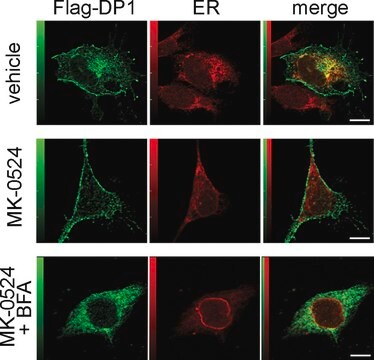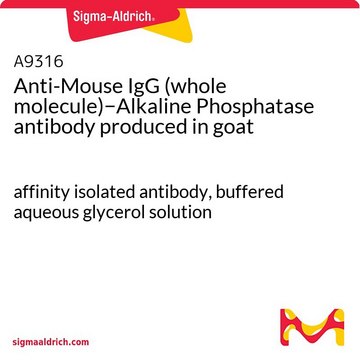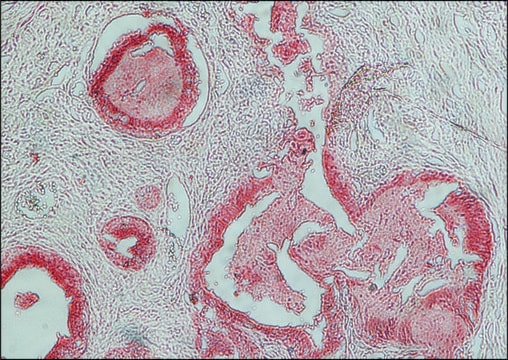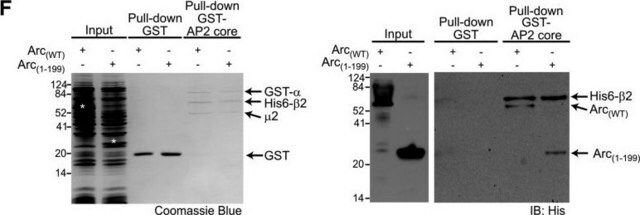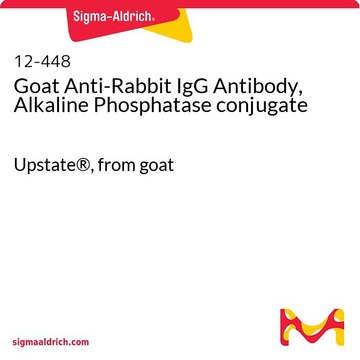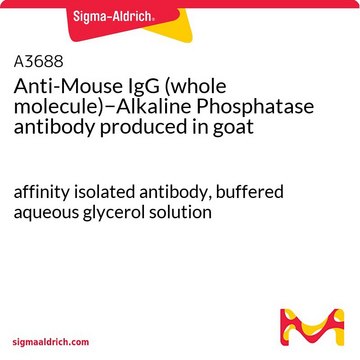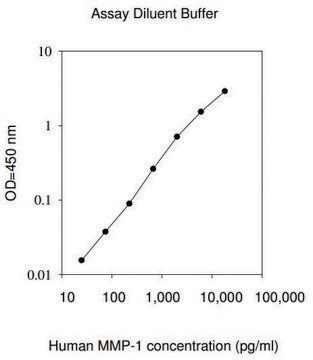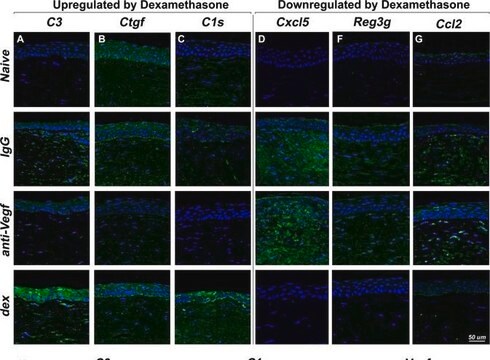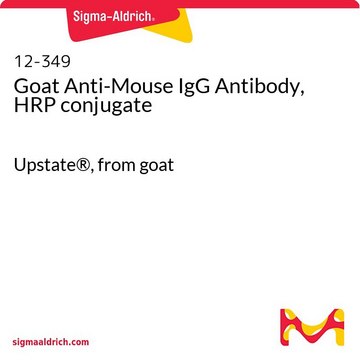AP124A
Goat Anti-Mouse IgG Antibody, Alkaline Phosphatase conjugate
Chemicon®, from goat
Sinónimos:
Anti-Mouse IgG Alkaline Phosphatase, Goat Anti-Mouse IgG
About This Item
Productos recomendados
origen biológico
goat
Nivel de calidad
conjugado
alkaline phosphatase conjugate
forma del anticuerpo
F(ab′)2 fragment of affinity isolated antibody
tipo de anticuerpo
secondary antibodies
clon
polyclonal
reactividad de especies
mouse
fabricante / nombre comercial
Chemicon®
técnicas
ELISA: suitable
western blot: suitable
Condiciones de envío
wet ice
modificación del objetivo postraduccional
unmodified
Descripción general
Especificidad
Aplicación
Immunohistochemistry: 1:1,000-1:2,000.
Optimal working dilutions must be determined by end user.
Secondary & Control Antibodies
Whole Immunoglobulin Secondary Antibodies
Ligadura / enlace
Forma física
15 mg/mL BSA and 0.05% sodium azide.
RECONSTITUTION:
Reconstitute with sterile distilled water to match the volume indicated on the vial label. Centrifuge product if it is not completely clear after standing for 1-2 hours at room temperature.
Almacenamiento y estabilidad
Información legal
Cláusula de descargo de responsabilidad
¿No encuentra el producto adecuado?
Pruebe nuestro Herramienta de selección de productos.
Código de clase de almacenamiento
13 - Non Combustible Solids
Clase de riesgo para el agua (WGK)
WGK 3
Punto de inflamabilidad (°F)
Not applicable
Punto de inflamabilidad (°C)
Not applicable
Certificados de análisis (COA)
Busque Certificados de análisis (COA) introduciendo el número de lote del producto. Los números de lote se encuentran en la etiqueta del producto después de las palabras «Lot» o «Batch»
¿Ya tiene este producto?
Encuentre la documentación para los productos que ha comprado recientemente en la Biblioteca de documentos.
Los clientes también vieron
Nuestro equipo de científicos tiene experiencia en todas las áreas de investigación: Ciencias de la vida, Ciencia de los materiales, Síntesis química, Cromatografía, Analítica y muchas otras.
Póngase en contacto con el Servicio técnico